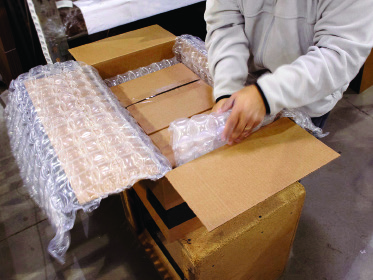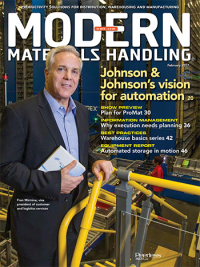The protective packaging balancing act
When selecting protective packaging, damage analysis and performance should drive material decisions, not cost.
When selecting protective packaging, such as air pillows or paper void fill, companies tend to make decisions based solely on material cost. But purchasing the least expensive protective solution can ultimately become a very costly decision, says Ryan Germann, e-commerce segment manager at Pregis.
“We recently worked with an e-commerce retailer who was re-evaluating their secondary packaging to reduce dimensional weight charges,” Germann recalls. “During that process, we discovered that when they experienced a damaged shipment, it actually impacted their bottom line by more than $300.”
That $300 includes the cost to replace the product(s), as well as customer service time, warehouse labor (to process the return and pick the item again), parcel shipping and additional packaging supplies. And, those are just the quantifiable costs.
“Although more difficult to quantify, this retailer’s marketing team noted that a negative customer experience—such as receiving a damaged product—results in lower customer lifetime value,” he adds. How much lower? “Our research found that 73% of consumers who receive a damaged shipment are unlikely to order from the same retailer again.”
For its shipments, the retailer ultimately selected Pregis’ Airspeed HC inflatable hybrid cushioning with square patterned, connected air cells. This proprietary design allows the material to be used for cushioning, wrapping, blocking/bracing and void fill. It also creates a much higher level of protection than air pillows or paper void fill, but takes up less volume, Germann explains, meaning the customer was able to meet their original goal of reducing their carton size.
“The key to picking protective packaging is balance,” he concludes. “Companies need to balance their shipping and packaging costs with customer experience. If an e-commerce retailer shipping more than 1 million orders a year can reduce their damage ratio from 2% to 1%—and a damaged shipment costs more than $300 each and risks a customer relationship as well—then the packaging is ultimately just a fraction of that overall cost.

Article Topics
Columns News & Resources
New resource center for weighing and dimensioning Protective packaging roundup MODEX C-Suite Q&A: Troy Donnelly, Senior VP of Sales, Marketing, and Application, DMW&H When Just-in-Time Just Doesn’t Work Recycling coastline plastic into premium reusable packaging Fresh food, anyone? RPCs protect in the supply chain Why Isn’t Your Loading Dock Connected to Your Supply Chain? More ColumnsLatest in Materials Handling
Registration open for Pack Expo International 2024 Walmart chooses Swisslog AS/RS and software for third milk processing facility NetLogistik partners with Vuzix subsidiary Moviynt to offer mobility solutions for warehouses Materials Handling Robotics: The new world of heterogeneous robotic integration BSLBATT is looking for new distributors and resellers worldwide Lucas Watson appointed CSO for Körber’s Parcel Logistics business in North America Hyster recognizes Dealers of Distinction for 2023 More Materials HandlingAbout the Author
Subscribe to Materials Handling Magazine

Find out what the world's most innovative companies are doing to improve productivity in their plants and distribution centers.
Start your FREE subscription today.
April 2024 Modern Materials Handling

Latest Resources












